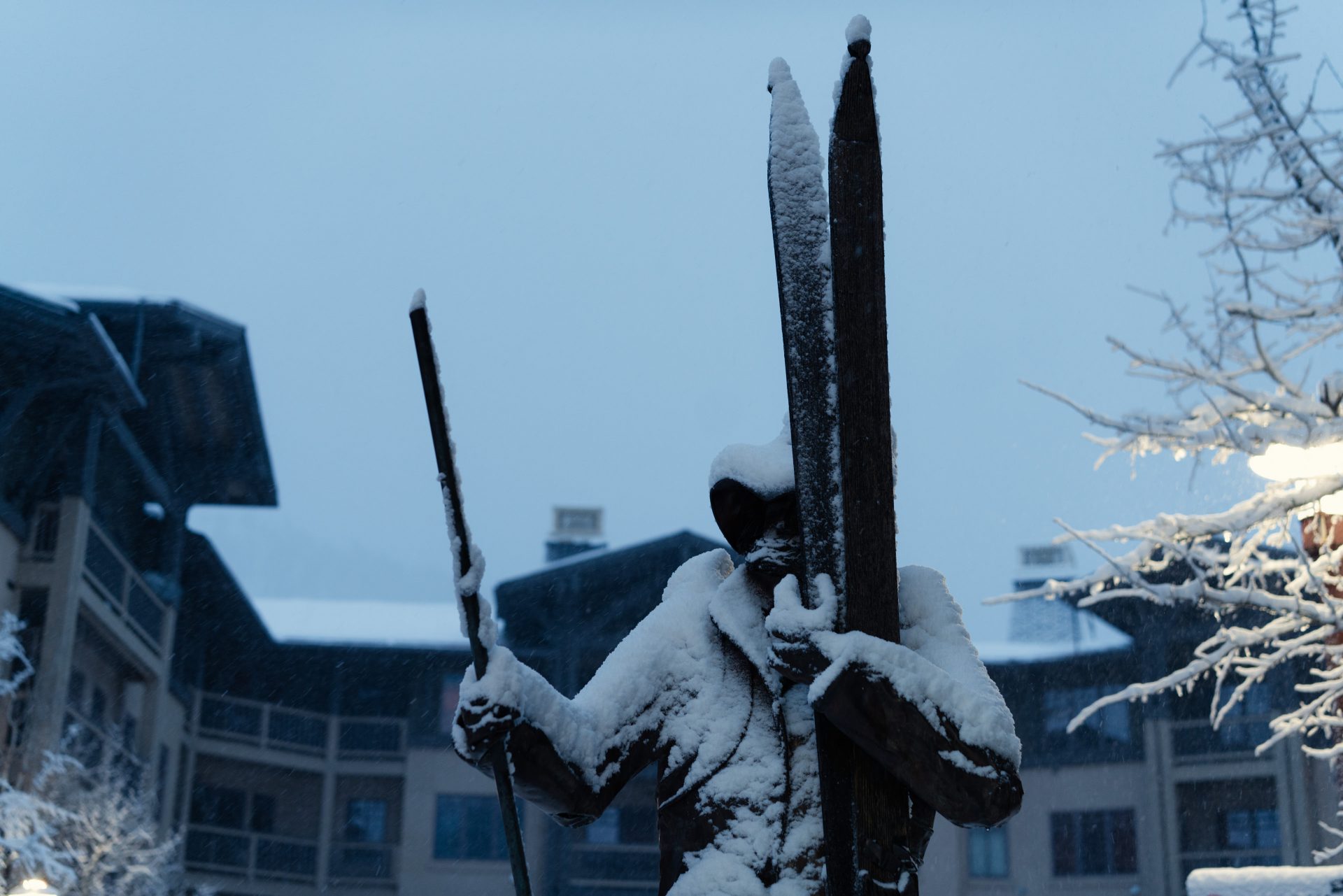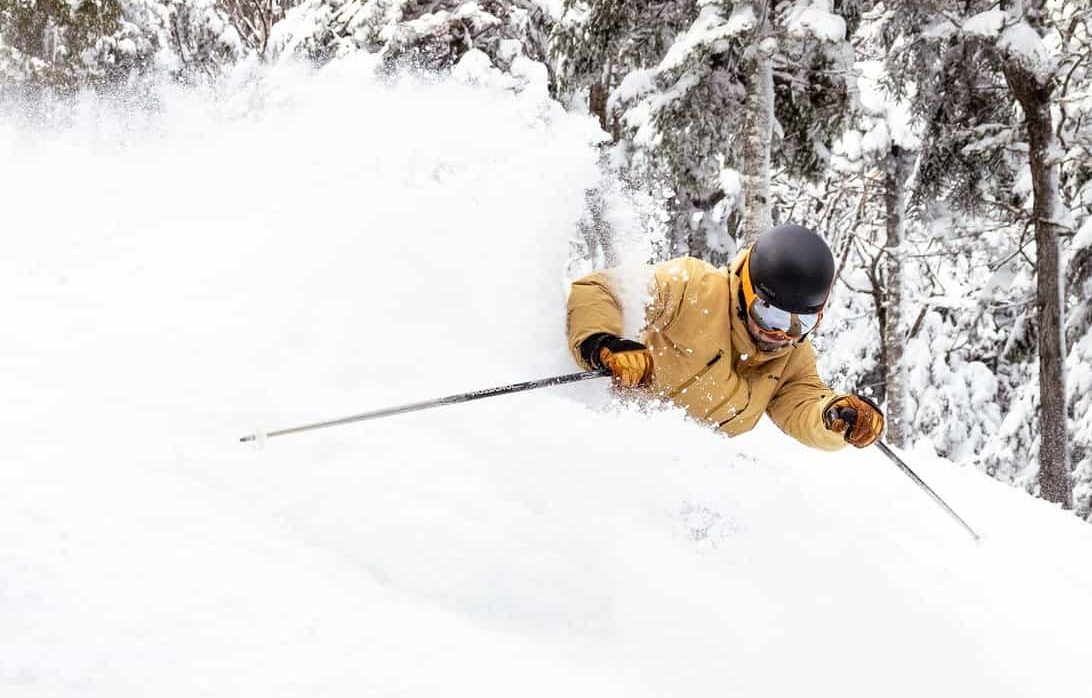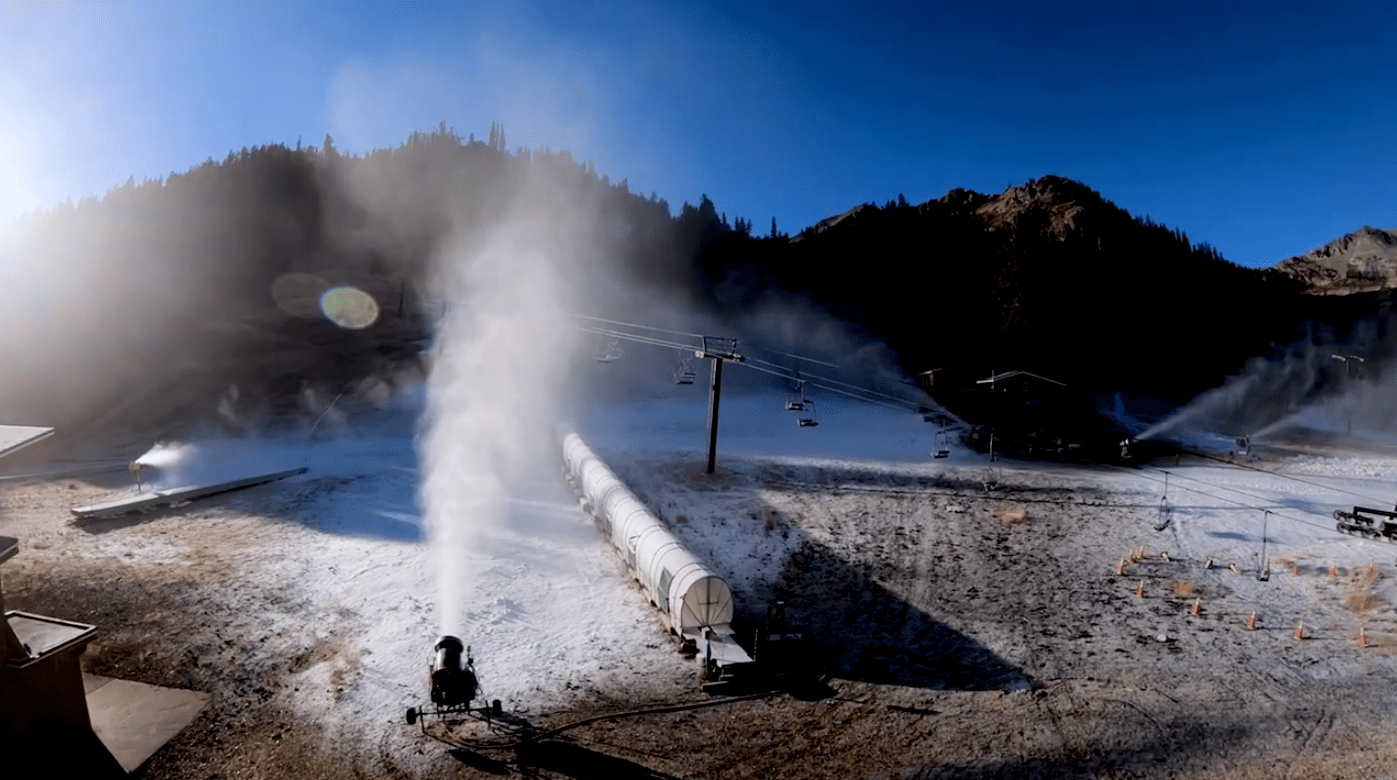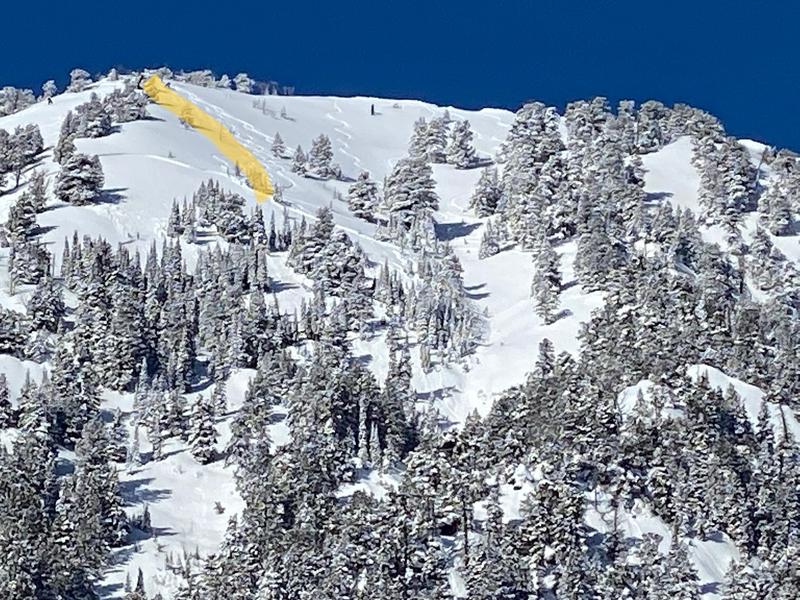
“Both riders were incredibly lucky. The skier skied 20′ to tuck behind a tree, where he was buried up to his chest and pulled his airbag. He lost both poles but was uninjured. The snowboarder went for a 300-foot ride which included periods fully under the snow. Towards the end his head came up just in time to see a dead tree immediately below him. He straddled it with the board and came to a stop. He was bruised and had twisted a knee but was otherwise fine. ” – Utah Avalanche Center, 3/28/20
Below is the full account of a skier triggered avalanche at Snowbasin ski resort in Utah on No Name Peak that partially buried a skier and mildly injured a snowboarder.
This avalanche happened inbounds at Snowbasin while Snowbasin’s lifts were closed due to Coronavirus but its slopes were open to uphill traffic.
Avalanche Details:
- Location: Snowbasin, No Name
- Elevation: 8,600′
- Aspect: Northeast
- Slope Angle: 38°
- Trigger: Skier
- Depth: 20″
- Width: 300′
- Carried: 1
- Caught: 2
- Buried: Partly 2
- Full Report here: UT Avy Center
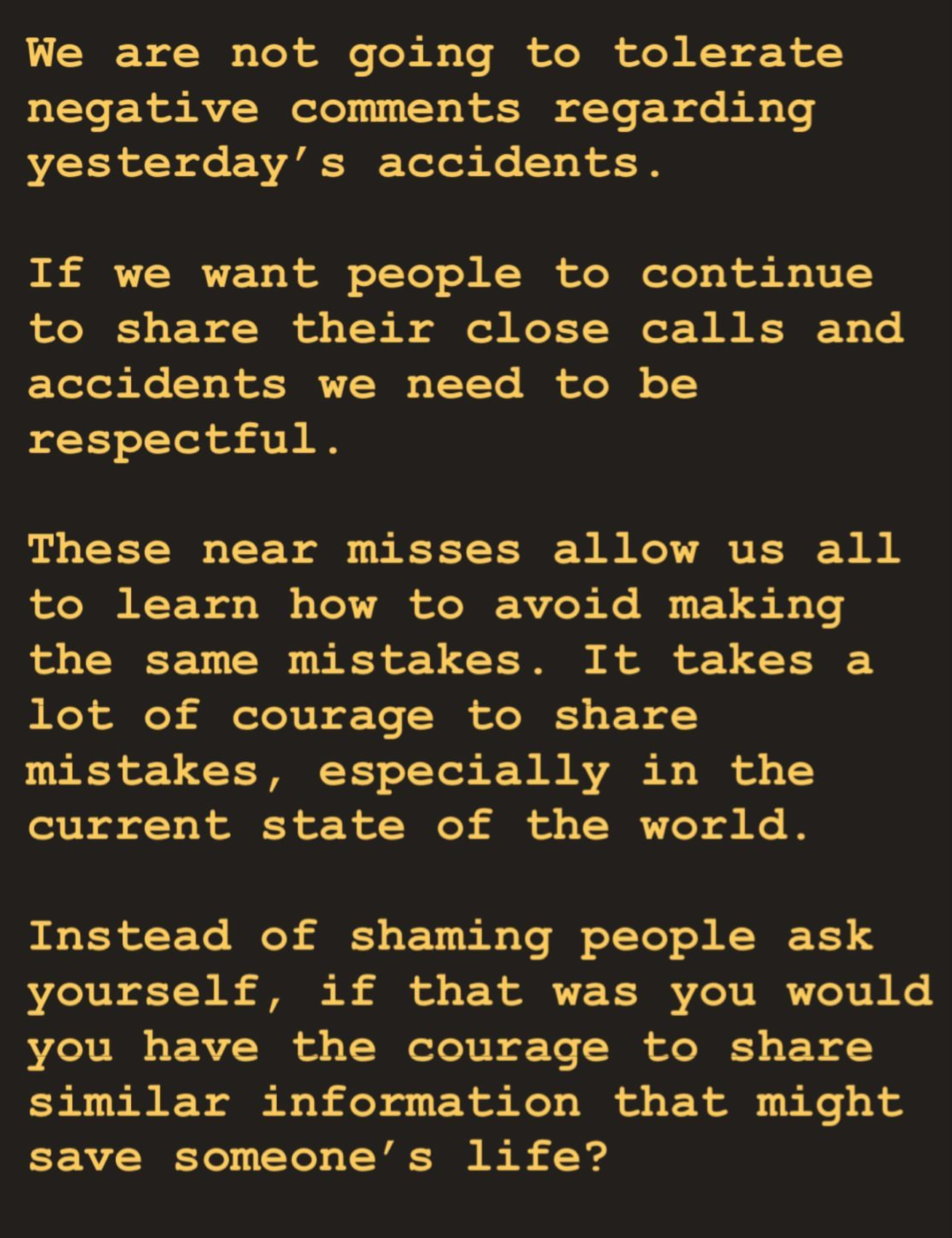
There was also a dramatic avalanche off Mt. Ogden at Snowbasin ski resort, UT on this same day, Friday, March 27th, 2020.
There was also a skier in a 2,000-vertical-foot avalanche on Friday on this same day, Friday, March 27th, 2020.
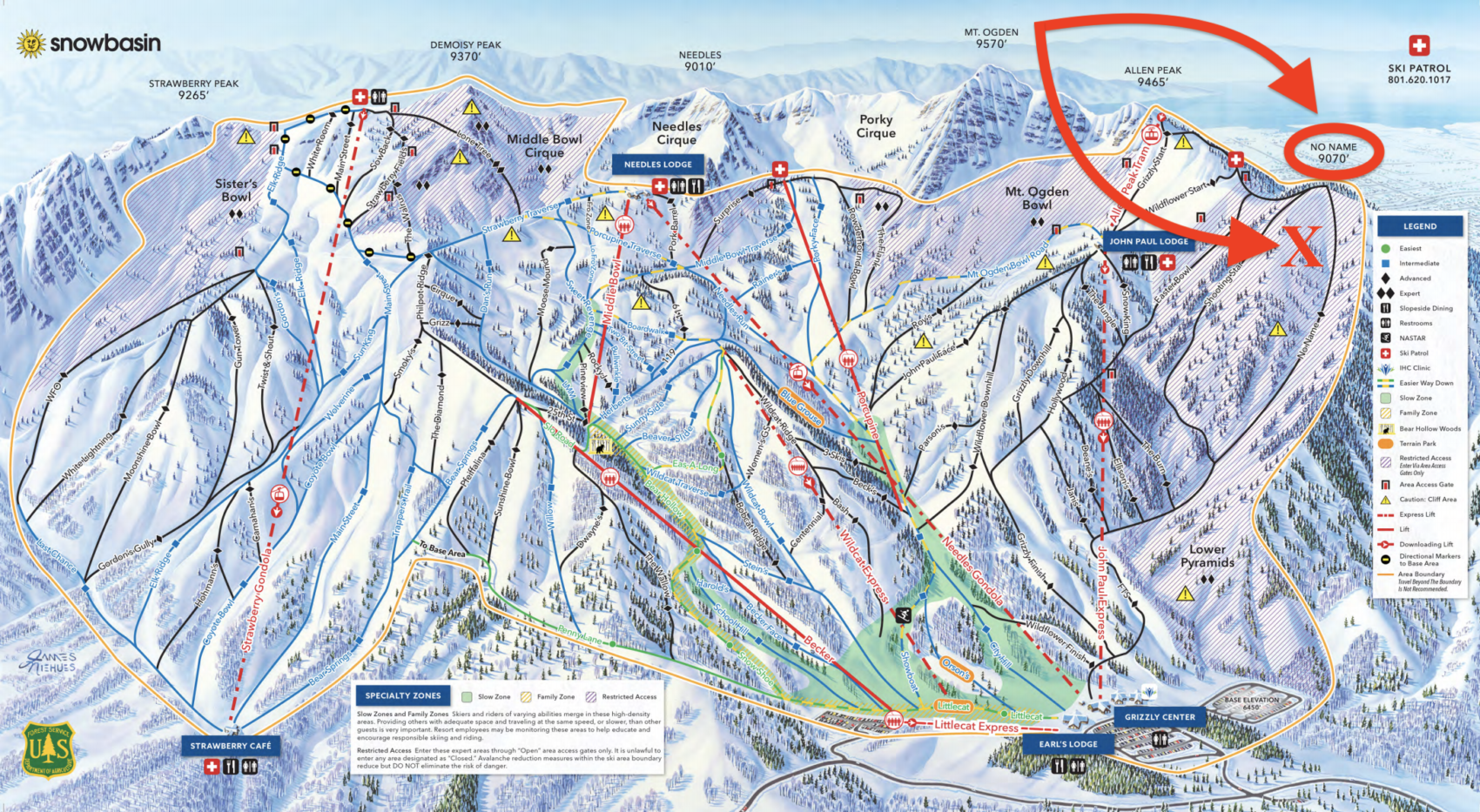
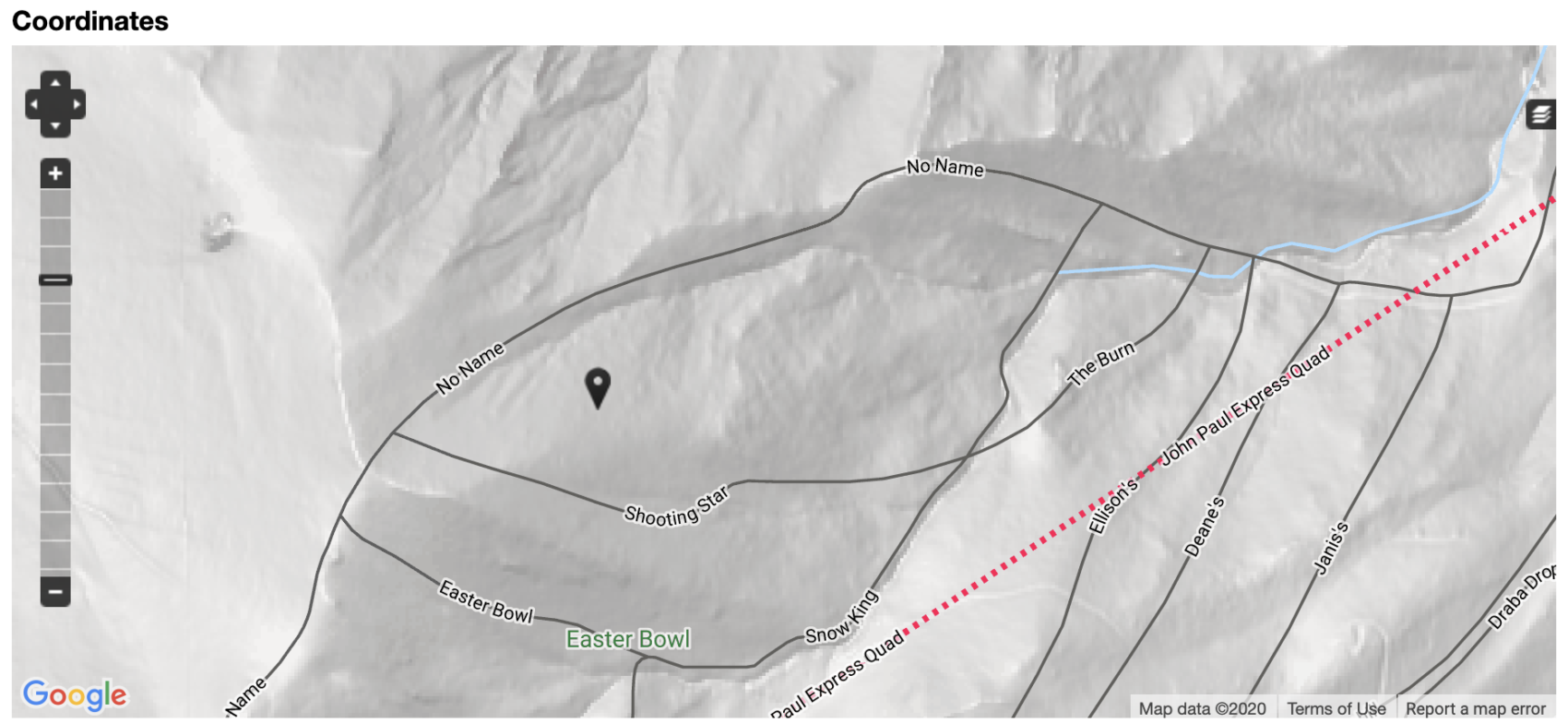
There was A HUGE AMOUNT of human triggered avalanches in Utah Friday.
Avalanche Rating on Friday, 3/27/20 was:
- Moderate above treeline
- Low near treeline
- Low below treeline
Please check out the Utah Avalanche Center’s Instagram story to see Avalanches in these locations on Friday:
- Mt. Odgen
- Mt. Superior
- Snowbasin ski resort, No Name
- Cardiac Ridge (near Alta)
- Main Days (near Alta)
- Providence Peak (near Logan)
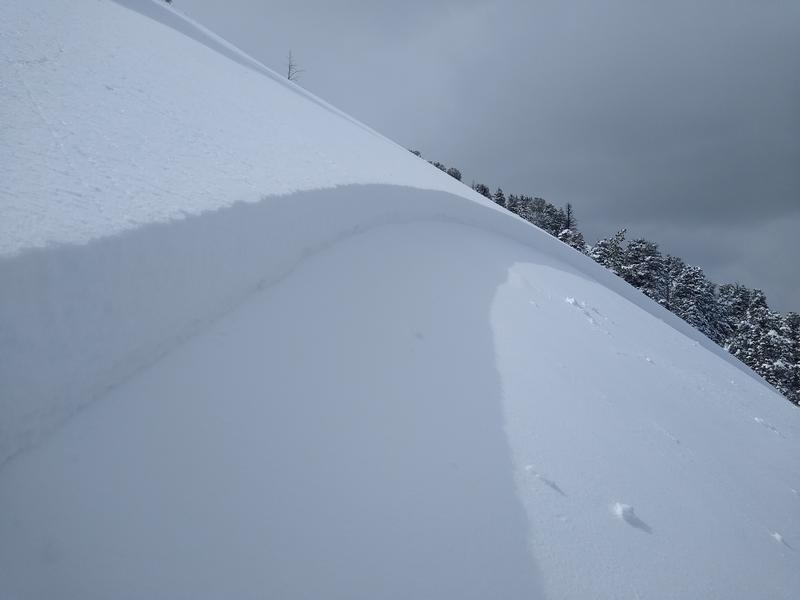
Avalanche Account From Snowbasin, UT on
No Name Peak on Friday
A party of 5 left the Snowbasin parking lot around 6:45 a.m., with a loose plan to ski the southeast shot from No Name peak. They carried transceivers, shovels, probes, airbags, and two-way radios. The individual who reported the slide was a 20-year season pass holder at Snowbasin, and had skied No Name perhaps 40 times; “I have the ‘No Name’ ski-run sign hanging in my office” he noted wryly. He has skied for 2 years in the backcountry. All members had taken a level I avalanche class.
By the time the party reached the summit of No Name, the avalanche advisory for the Ogden area mountains had been issued. Together they reviewed it at the top of the run: Moderate above 8,500 feet, low for northerly aspects below 8,500′. They considered the run back and to the southeast to be safer (at least in the early morning), primarily because it was lower angle. They recognized that No Name could produce an avalanche after the recent 2-foot storm, but with no signs of wind loading and with a Moderate hazard forecast they felt it seemed reasonable. This assessment was reinforced as they watched another party of 3 ski the line without triggering sluffs or slabs. The party heard of a catch-and-carry incident in Ogden Chute as they transitioned, but did not re-evaluate their decision.
At this point the party divided so that the three with work commitments could take one long home run down No Name while the other two could do a lap to the southeast before hiking back up to exit via No Name. The triggering party descended to an “apex” from which they skied one at a time. The first person skied to a tree where he felt relatively safe and stopped to film the others. The second person, a snowboarder, rode right to the first person before the slide was triggered and propagated hundreds of feet back towards the 3rd person. In the video shared by the triggering party, you’ll see the friend arrive and then confusion as the whole slope starts to move.
Both riders were incredibly lucky. The skier skied 20′ to tuck behind a tree, where he was buried up to his chest and pulled his airbag. He lost both poles but was uninjured. The snowboarder went for a 300 foot ride which included periods fully under the snow. Towards the end his head came up just in time to see a dead tree immediately below him. He straddled it with the board and came to a stop. He was bruised and had twisted a knee but was otherwise fine. The 3rd skier could not see his partners below, but both responded when he called them on the two-way radio.
As the third skier descended, the first radioed a warning to be careful of hangfire. This was a very reasonable concern.
When the three of us (including Snowbasin patrol director GR Fletcher and UAC forecaster Drew Hardesty) went to investigate the avalanche this afternoon, one person remained 150 feet above the crown to prevent other skiers from triggering hangfire on partners below.– Utah Avalanche Center, 3/28/20

